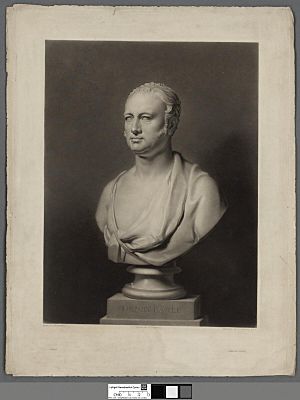Henry Earle facts for kids
Henry Earle (1789–1838) was an English surgeon. He was known for his medical skills and important contributions to surgery during his time. He was also a Fellow of the Royal Society, which is a very respected group of scientists.
Contents
Early Life and Training
Henry Earle was born on June 28, 1789, in Hanover Square, London. He was the third son of Sir James Earle, who was also a famous surgeon. His mother was the daughter of Percival Pott, another very important surgeon. It seems medicine ran in his family!
When he was 16, Henry began training with his father. This was like an apprenticeship, where he learned directly from an experienced surgeon. In 1808, he became a member of the College of Surgeons. Soon after, he started working as a house surgeon at St. Bartholomew's Hospital.
Important Inventions and Awards
In 1811, Henry Earle started his own practice as a surgeon. He quickly became well-known for inventing a special bed. This bed was designed to help people who had broken their legs heal better. For this clever invention, he received two awards from the Society of Arts.
In 1813, he won the Jacksonian prize from the College of Surgeons. He earned this award for writing an excellent essay. His essay was about the diseases and injuries that can affect nerves.
Career Highlights
Henry Earle's career continued to grow. In 1815, he was chosen to be an assistant surgeon at St. Bartholomew's Hospital. Later, in 1827, he became a full surgeon at the same hospital. He also worked as a surgeon at the Foundling Hospital. A statue of him was placed there in 1817 to honor his work.
In 1822, Henry Earle was elected a fellow of the Royal Society. This is a big honor for scientists and researchers. It shows that his work was highly valued.
Leadership Roles
Henry Earle also took on important leadership roles in the medical field. In 1833, he became a professor of anatomy and surgery at the Royal College of Surgeons. From 1835 to 1837, he served as the president of the Royal Medical and Chirurgical Society.
When Queen Victoria became queen, Henry Earle was appointed as her surgeon extraordinary. This meant he was a special surgeon to the Queen herself.
Later Life
Henry Earle lived in George Street, Hanover Square, London. He had a very successful medical practice. Sadly, he passed away from a fever at his home on January 18, 1838. His son, Alfred Earle, later became a bishop.


